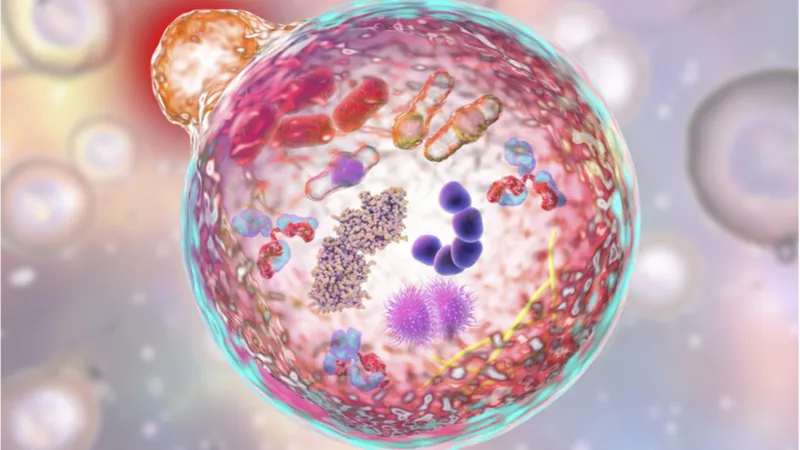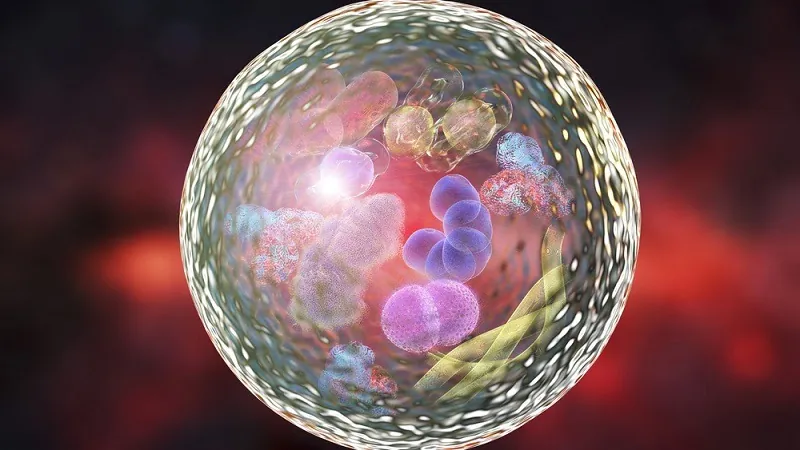What is Autophagy?
Autophagy is the ultimate recycling system of the cell. The word comes from ancient Greek and means “eating of self” [1]. Although its name might sound harmful, it appears to have longevity-promoting effects [2].
What is autophagy?
Autophagy is the way cells break down unwanted or dysfunctional organelles and proteins in the cell [1-2]. It can consume organelles, such as mitochondria, peroxisomes, and the endoplasmic reticulum [1].
Mitochondria are the power plants of your cells that convert nutrients into cellular energy. Peroxisomes are small, membrane-enclosed organelles that contain enzymes involved in various metabolic reactions. The endoplasmic reticulum is a network of membranous tubules in the cytoplasm. It acts as a transportation system in the cell, and has many other important functions such as protein folding. It usually has ribosomes attached and is involved in protein and lipid synthesis.
Aberrant proteins and organelles, if left unchecked, could damage the cell. At the very least, they can fail to perform their needed functions [1]. One good example of this is dysfunctional mitochondria. Autophagy can selectively remove dysfunctional mitochondria that have no membrane potential. If not removed, these mitochondria can release reactive oxygen species, which can promote death by apoptosis [2]. Mitochondrial dysfunction is thought to be one of the reasons we age.
Autophagy is also one way our cells deal with energy shortages [2]. For example, after a period of fasting, a body’s cells will respond by breaking down some of their organelles and proteins for energy.
Finally, it is a recycling mechanism. During autophagy, proteins and organelles go through catabolism. This is a process that breaks them down into amino acids and other small components. These small components are recycled to create new proteins and organelles [1, 2].
How does autophagy work?
If a cell has a misfolded protein, before it can be broken down it needs to be separated from everything else. If not, the proteases (proteins that break down other proteins) would damage the cell by breaking down useful parts too.
A membrane called the isolation membrane (or phagophore) separates the target protein from everything else [2] . This double membrane wraps around the protein to form an autophagosome. From there, this bubble (the autophagosome) makes its way to a lysosome. The autophagosome fuses with a nearby lysosome to form the autolysosome [1].

Read More
The protein is now exposed to proteases that digest it, breaking it down into amino acids. Permeases and transporters take the amino acids away for recylcing once it is digested [1]. Permeases are proteins that help substances get through membranes. Likewise, transporters are proteins that, , transport things.
In the most basic terms, a small bubble forms around the protein (autophagosome). Then, it fuses with another bubble (a lysosome) to form a new one (an autolysosome). There, the protein breaks into smaller pieces. Other proteins aid in transporting these pieces elsewhere so that they can be used for building new structures.
Is autophagy good or bad?
It functions as a survival mechanism when energy gets low. It aids the development of several simple organisms, including yeast, drosophila, and C. elegans [1]. In mouse models, it seems to aid cytosol changes during embryonic and postnatal development [4].
It alleviates the issue of aggregated or misfolded proteins. It rids the cell of some types of damaged organelles [1], and it serves as an innate immune system defense against both viral and bacterial pathogens [5].
Despite its noxious-sounding name, it serves more of a protective role than a harmful one. This was observed in studies in which rodents were subjected to damage of the heart, nervous system, liver, and kidney [2].
It also seems to help protect against neurodegeneration, cancer, diabetes, heart, liver, and autoimmune disease [1]. Autophagy can recycle aberrant mitochondria and can reduce unnecessary cell death in cells after they divide [2].
What does autophagy have to do with aging?
Autophagy and aging seem to be intimately connected. When the genes that cause autophagy are blocked in mammalian cells, we observe degeneration. Much of this degeneration resembles the degeneration we see in aging. In fact, aging is typically accompanied by a reduced level of autophagy. When we boost autophagy, it seems to mitigate aging. Conversely, when we reduce it, we speed up aging [2].
The many strategies for slowing aging in model organisms also often trigger autophagy. This begs the question of whether these interventions work because they cause autophagy, and this might be the case. When we prevent autophagy during some approaches known to increase lifespan (such as caloric restriction, insulin growth factor pathway inhibition, spermidine, resveratrol, or rapamycin), it reduces the anti-aging effects [2].
We can also see the beneficial effects of autophagy in the study of age-related diseases, such as atherosclerosis. Atherosclerosis is a circulatory disease where the arteries harden and narrow due to plaque formation. Atherosclerosis can lead to heart attacks, strokes, and other forms of circulatory disease.
Researchers bred mice to have enhanced autophagy via increasing the expression of a gene called TFEB. The change seemed to have a protective effect against atherosclerosis caused by a Western diet. Furthermore, they showed that trehalose, a naturally occurring sugar, enhances autophagy. It reduced the signs of atherosclerosis when it was injected into the body cavities of mice [3].
Conclusion
Autophagy is an important maintenance and repair mechanism, especially in the context of aging. A number of research efforts are working on triggering or increasing its activity in cells.
Literature
[1] Glick, D., Barth, S., & Macleod, K. F. (2010). Autophagy: cellular and molecular mechanisms. The Journal of Pathology, 221(1), 3-12. doi:10.1002/path.2697
[2] Rubinsztein, D. C., Mariño, G., & Kroemer, G. (2011). Autophagy and Aging. Cell,146(5), 682-695.
[3] Sergin I, Evans TD, Zhang X, Bhattacharya S, Stokes CJ, Song E, Ali S, Dehestani B, Holloway KB, Micevych PS, Javaheri A, Crowley JR, Ballabio A, Schilling JD, Epelman S, Weihl CC, Diwan A, Fan D, Zayed MA, Razani B. Exploiting macrophage autophagy-lysosomal biogenesis as a therapy for atherosclerosis. Nature Communications. June 7, 2017.
[4] Cecconi, F., & Levine, B. (2008). The Role of Autophagy in Mammalian Development: Cell Makeover Rather than Cell Death. Developmental Cell, 344-357. doi:10.1016/j.devcel.2008.08.012
[5] Wileman, T. (2013). Autophagy as a defence against intracellular pathogens. Essays in Biochemistry, 153-163. doi:10.1042/bse0550153



